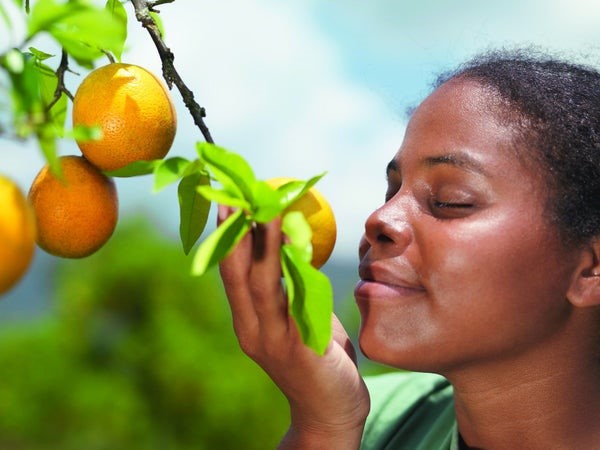Credit: Monty Rakusen Getty Images
Scientists have created a “map” of odor molecules, which could ultimately be used to predict new scent combinations
The human nose finds it simple to distinguish the aroma of fresh coffee from the stink of rotten eggs, but the underlying biochemistry is complicated. Researchers have now created an olfactory “map”—a geometric model of how molecules combine to produce various scents. This map could inspire a way to predict how people might perceive certain odor combinations and help to drive the development of new fragrances, scientists say.
Researchers have been trying for years to tame the elaborate landscape of odor molecules. Neuroscientists want to better understand how we process scents; perfume and food manufacturers want better ways to synthesize familiar aromas for their products. The new approach may appeal to both camps.
One earlier strategy for mapping the olfactory system involves grouping odor molecules that have similar molecular structures and using those similarities to predict the scents of novel combinations. But that avenue often leads to a dead end. “It’s not necessary that chemicals with the same chemical structures will be perceived similarly,” says Tatyana Sharpee, a neurobiologist at the Salk Institute for Biological Studies in La Jolla, Calif., and lead author of the study, which appeared in August in Science Advances.
Sharpee and her colleagues analyzed odor molecules found in four familiar and unmistakable scents: strawberries, tomatoes, blueberries and mouse urine. The researchers calculated how often and in what concentrations certain molecules turned up together in these scents. They then created a mathematical model in which molecules that occurred together frequently were represented as closer in space and molecules that rarely did so were farther apart. The result was a “saddle”-shaped surface—a hallmark of a field called hyperbolic geometry, which obeys different rules from the geometry most people learn in school.
The researchers envision an algorithm, trained on this hyperbolic geometry model, that can predict the scents of new odor combinations—or even help to synthesize them. One of Sharpee’s collaborators, behavioral neuroscientist Brian Smith of Arizona State University, wants to use this method to create olfactory environments in places devoid of natural scents.
Such a tool would be useful to scientists and odor manufacturers alike, says olfactory neuroscientist Joel Mainland of the Monell Chemical Senses Center in Philadelphia, who was not involved in the study. The ultimate goal is to know enough about how odors work to replicate natural smells without the natural sources, Mainland says: “We want to identify a strawberry flavor without worrying about replicating the ingredients that are in a strawberry.”
For more insights like this, visit our website at www.international-maths-challenge.com.
Credit of the article given to Stephen Ornes


